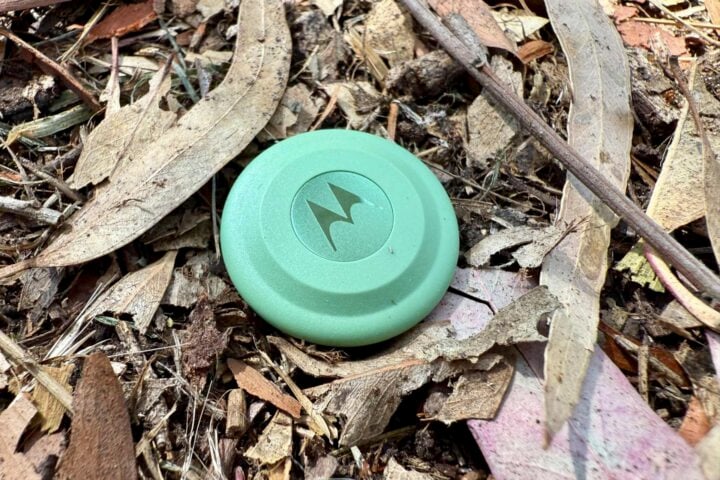So many people are feeling the pinch at the moment, for all sorts of reasons. Australia’s aging population adds another challenge to navigate. How can people provide adequate care for elderly and vulnerable family members when economic pressures keep everyone busier than ever?
Turning to technology is one answer. I recently spoke with Jo Trilling on ABC Perth about the “sandwich generation“, the 1.5 million Australians caring for children and aging parents simultaneously. Common consumer tech items like phones and location trackers can help, but using them presents multiple issues to consider.
Concerns such as privacy and consent are important, as is confidence in using various devices. Like many things, technology can be a powerful force for good. However, if misused, it can also be incredibly harmful.
There are many tech-based solutions that can help keep an eye on the entire family, particularly elderly relatives. A lot of solutions apply to all family members, not just those who might need monitoring in case of a fall or needing help getting home.
Some of these solutions don’t require any extra purchases, while others might warrant an investment in exchange for peace of mind. But before you stock up on gadgets, involving everyone in the decision-making process should be the first step.
Consent is key
If there’s a family member you want to monitor for their wellbeing, make sure to broach the subject with them first. Respect their privacy and wishes, while also considering their opinions. Remember, it’s not just your peace of mind you need to consider; think of how the other person feels and what is best for them.
While largely specific to younger people, recent eSafety research found a growing trend of Australians who expect to track intimate partners via location-sharing apps around the clock. This type of behaviour can lead to coercive control and potential abuse.
One way to avoid this is to start by openly discussing any form of tracking with all relevant family members. If you want to track a relative’s location for their safety, explain why and how it will benefit them. Also, discuss what technology you want to use, whether it be a phone, a wearable, or a different tracking device, and ensure the family member feels comfortable and safe.
Don’t force anything upon someone if they don’t consent. The idea of being tracked and monitored 24/7 may feel like an invasion of privacy. In this case, there are alternative options, like only tracking between specific hours or letting the family member control what they share.
For people confident in using technology
Regardless of age, everyone has different affinities for technology. Speaking from personal experience, I have some relatives who navigate smartphones confidently, and others who struggle. These tech-based solutions are best suited to those who use a phone every day and do more than just talk and text.
If you want to check that an older relative gets home safely between medical appointments, both Apple and Android phones have built-in family location-sharing features.
Starting with Apple’s iPhones, the Find My app lets you share locations with family members. It’s entirely opt-in, so anyone within an Apple family gets to approve whether they share their location or not. There’s a lot of customisation available, including recurring notifications or alerts when someone arrives at a specific location.

A more active alternative is Apple’s Check In feature on iPhones. It functions similarly, except that it’s more active, rather than passive, by nature. It lets you send a message before heading out, with another notification sent either after arriving at a destination or after a set amount of time.
Android phones also have Find My Device, which uses a network of devices to triangulate locations. So, if a relative hasn’t arrived home at an expected time, you should be able to find them.
Monitoring relatives less confident using tech
The above ideas only work if people remember to bring their phones with them. This next set of ideas applies to anyone not as confident in their phone use, or doesn’t regularly carry a phone.
Similar to the location tracking services embedded in phones, a dedicated tracker might be easier. Devices like Apple AirTags, Samsung Galaxy SmartTags, Moto Tags, and Tile Trackers are among many small objects that are easy to carry. Of the people I’ve spoken with, I’ve heard of trackers placed in handbags, wallets, jacket pockets, and anything a family member always takes with them.
It also places less stress and responsibility on the individual being monitored because, for them, it’s a set-and-forget option. Family members can simply check their phone at any time to see where a person is, letting the tracker do all the work.
Another option is a smartwatch. In addition to location-tracking features, modern wearables include some form of fall detection. The latest Apple Watch and Samsung Galaxy Watch models use accelerometer technology to detect when the wearer falls over.

When a wearer falls over, the smartwatch automatically prompts them, checking that they’re okay. If they’re responsive, it lets the user select if they need emergency help, which then calls emergency services and contacts. Otherwise, the watch automatically contacts emergency services, which could make all the difference when every second counts.
There are plenty of other options, too, like portable safety alarms and MedicAlert accessories that contact family members in an emergency. Most of these solutions might be a bit pricier than just using a phone, but are worth considering if they suit someone’s lifestyle better.
Above all else, make sure everyone’s on the same page. The best way to monitor vulnerable family members is whichever method makes everyone feel safe.
The post How tech can help keep an eye on vulnerable family members appeared first on GadgetGuy.



0 (mga) komento:
Mag-post ng isang Komento